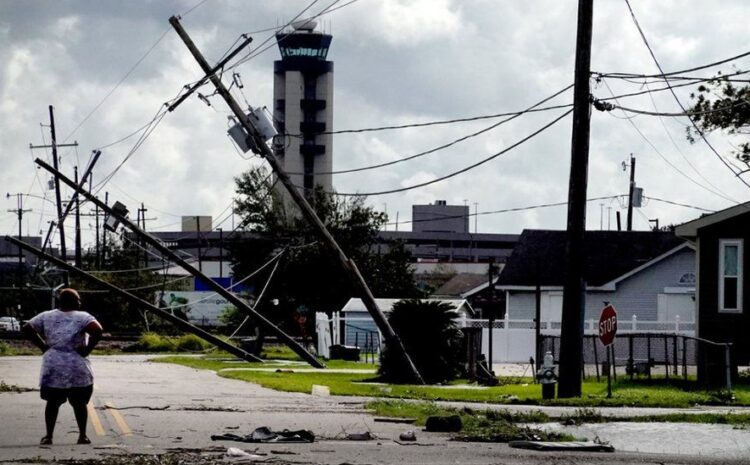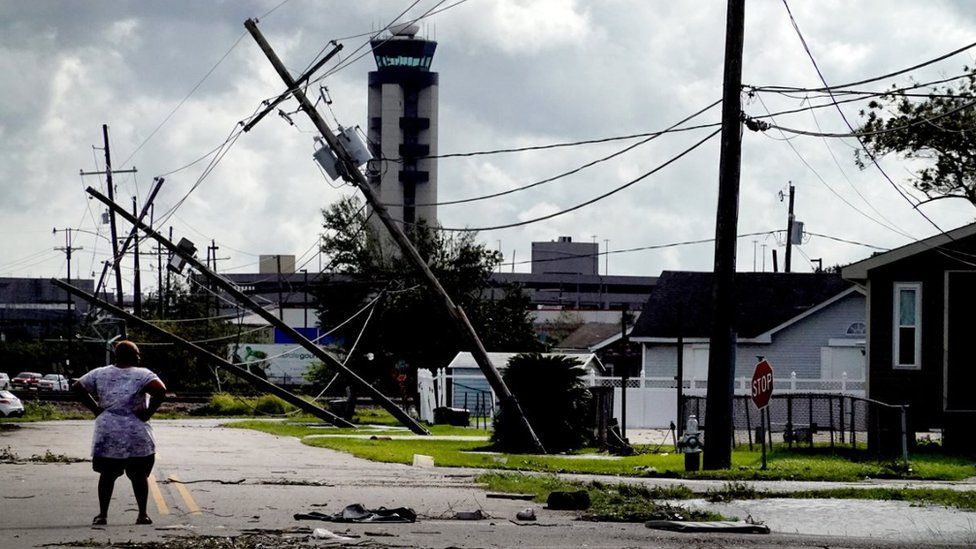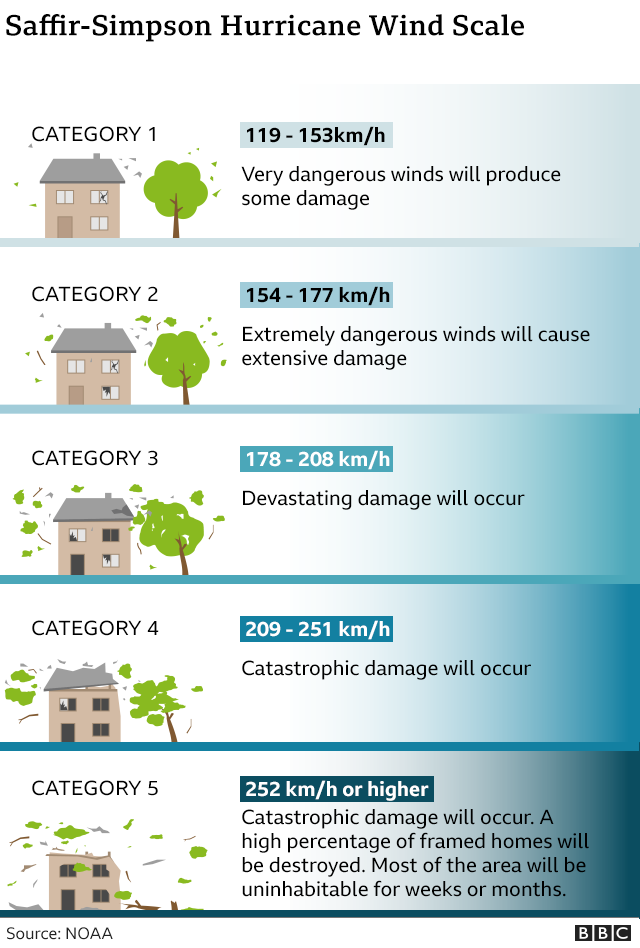
GETTY IMAGES image captionLines pulled down after the storm in Louisiana
Ida made landfall on Sunday with 150mph (240km/h) winds, the fifth strongest to ever hit the US mainland. About one million locals remain without power.
“It’s going to be a difficult life for quite some time,” said one local leader in the Greater New Orleans area.
About 5,000 National Guard members have been deployed to aid search and rescue.
In addition, more than 25,000 workers from around the country have mobilised to support power restoration in the state, according to CNN.
At least one person is dead after a tree fell on their home in Ascension Parish, in Louisiana’s Baton Rouge area.
“The systems we depended on to save lives and protect our city did just that and we are grateful, but there is so much more work to be done,” said New Orleans Mayor LaToya Cantrell on Monday.
She urged residents who had already evacuated their homes to stay put and not return until power and communications have been restored.
As the slow-moving Ida continues to move inland, it has weakened – but the National Hurricane Centre warned that heavy rain could still bring flooding to parts of Mississippi, Alabama and Florida.
Ida was previously deemed “life-threatening”, drawing comparisons to Hurricane Katrina, a 2005 storm that had a path similar to Ida and killed 1,800 people.
But it seemed that New Orleans’ flood defences, strengthened in Katrina’s aftermath, have done their job. Governor John Bel Edwards said the levee systems had “performed magnificently” and none have thus far been breached.
President Joe Biden has declared a major disaster in the state, releasing extra funds for rescue and recovery efforts.
On Monday, he pledged that the federal government would “stand with the people of the Gulf [Coast] for as long as it takes for you to recover”.
Entergy, the largest power company in Louisiana, warned that it would take days – and likely weeks in the hardest hit areas – to restore electricity to the more than one million homes without power across the state.
 IMAGE SOURCE GETTY IMAGES
IMAGE SOURCE GETTY IMAGESIda gathered strength over the warm waters of the Gulf of Mexico during the weekend. More than 90% of oil production there has been shut down as a result of the storm.
On Sunday, Ida made landfall south of New Orleans as a category four hurricane – meaning it would cause severe damage to buildings, trees and power lines. As it moves inland, Ida’s winds have dropped to 95mph (153km/h), meaning it is now a category one storm.
Fear in the Big Easy
By Nada Tawfik, BBC News
It’s an eerie feeling to stand in New Orleans as it’s plunged into darkness. And all around the famous French quarter debris and tree branches litter the streets.
Standing outside is painful. The rain pelts you as winds of 70mph make it difficult to stand. Residents for the most part have heeded warnings to stay indoors for the worst of the storm. When you speak to them, they’ll tell you that hurricanes have become a part of their lives. It’s the trade-off they accept for everything else the Big Easy has to offer.
Still, there’s always a fear that the next storm could be “the big one”. Kenneth McGruder has lived in the lower 9th ward for more than 30 years. He evacuated for Hurricane Katrina and, like many others, came back to find his house under water. He is an older man who speaks openly about the trauma that caused.
Ida strengthened so quickly, he felt he didn’t have enough time to leave his home. He trusts the city’s new hurricane infrastructure but again, there’s always that fear.

Covid-19 has also further complicated efforts to keep people safe. Louisiana hospitals are already under pressure from Covid-19, as the state has the third-highest rate of infections in the US.
Normally, hospitals in the predicted path of the hurricane would be evacuated, but this time there are few beds available, even at facilities further inland.
“We don’t have any place to bring those patients. Not in state, not out of state,” Mr Edwards said.
Ida came ashore on the 16th anniversary of Hurricane Katrina, a category three storm when it made landfall.
Since then, billions of dollars have been spent on flood defences, known as levees. So far, the levees have held, though a flash flood warning is in place for New Orleans.
High winds tore part of the roof off a hospital in the town of Cut Off, Louisiana, just inland from the Gulf of Mexico. The hospital said it had suffered “significant damage” but that its patients were safe.
The impact of climate change on the frequency of storms is still unclear, but increased sea surface temperatures warm the air above, making more energy available to drive hurricanes.
As a result, they are likely to be more intense with more extreme rainfall.

